Attorney credits success to mantra chanting
Scott Hanthorn, practicing attorney, prepares to chant the mantra nam-myoho-renge-kyo. Chanting takes place towards the Gohonzon, a scroll inside the cabinet that is modeled after Daishonin’s inscription of his enlightened life. Photo credit: Jamal Melancon
January 28, 2016
Scott Hanthorn attributes his 25 years as an attorney and two years as the New Orelans area coordinator of Nichiren Shoshu Buddhism to mantra chanting.
Hanthorn, a practicing attorney, was first introduced to Nichiren Shoshu Buddhism when he was spending his teenage days on the streets of the French Quarter, living similar to what New Orleanians now call gutter punks or street vagabonds. A friend propositioned him to check out the chanting that a group of Nichiren Shoshu practitioners were doing on the
West Bank.
Hanthorn took the offer because he was interested in metaphysics at the time.
“I was studying it since I was 15 years old,” Hanthorn said.
Hanthorn witnessed the group all direct their gaze to a specific area on a scroll held inside a cabinet. Then they started chanting the mantra nam-myoho-renge-kyo, while their fingers held mantra beads that their hands enclosed between their palms.
The purpose of the chanting is to awaken one’s Buddha nature. As a byproduct of this, one’s life rhythm is altered so that they’re in the right place at the right time more and more to attain the things they’re focused on in life.
“I thought they were all insane chanting to a paper in a box,” Hanthorn said.
The group of Nichiren Shoshu Buddhism believers invited Hanthorn to study with them after their practice. Then he started to have confidence in their belief.
“The one thing that gave credence to the whole Buddhist practice was the fact that their study topic was called ichinen sanzen, the three thousand realms in a momentary state of existence,” Hanthorn said.
Hanthorn saw similar topics like ichinen sanzen in the Hebrew Kaballah, which was the greatest or highest metaphysical thought he had encountered up until that point in his life. He was intrigued seeing similarities in the mystical aspects of Judaism and Buddhism.
“The other thing that attracted me to the practice that got me to try it was the fact that you didn’t have to believe it on the front end,” Hanthorn said.
He eventually began consistent practice of the Buddhist sect of Nichiren Shoshu for the past 43 years. It involves chanting nam-myoho-renge-kyo, as well as reciting the Gongyo, specific chapters from the Lotus Sutra that Shakyamuni Buddha claimed as his highest teaching.
Nichiren Daishonin was born more than 790 years ago in Japan and is known as the True Buddha of the age we live in. He revealed that chanting nam-myoho-renge-kyo or what’s called the mystic law of cause and effect is the only correct teaching for attaining enlightenment.
According to Hanthorn, Nichiren Shoshu Buddhism came to America with Japanese war brides. American servicemen stationed in Japan married women members of Nichiren Shoshu, and in the 1960s they organized themselves nationally.
During the chanting of the nam-myoho-renge-kyo, one looks at a Gohonzon, the object of worship in Nichiren Shoshu, which is a scroll modeled after Daishonin’s inscription of his enlightened life. Hanthorn said that by deepening one’s faith through practice, they are also engaging in a purification of their senses.
Catherine Wessinger, Professor of Religious Studies, compares the benefits of chanting to meditation.
“You can get the benefit of purifying your mind by just chanting (nam-myoho-renge-kyo)” said Wessinger.
One chants to manifest their Buddha nature and also to achieve things in life. Their life rhythm, or where one is when they’re there, shifts through their practice.
“Naturally occurring incidents seem to flow from this and after so many coincidences you have to say that there’s a direct, statistical significance between you chanting for something and it happening,” Hanthorn said.
Nichiren Shoshou uses the concept of self-directed reformation, which occurs as a result of the practice of the chanting. Professor Wessinger said this is natural because she tells students in her Religions of the World course that all humans desire well-being.
“I think in all religions people participate out of self-interest,” Wessinger said.
The Rev. Edward Vacek, S.J. pointed out that compassion can be without self-interest in religious contexts, as Christians symbolize this idea with Jesus on the cross. Buddhism and Christianity share a concern for the belief in the interconnectedness of all beings, which serves as reason to direct one’s self-interest towards compassion.
“All human beings are interconnected, so human beings are social and have a particular connection that’s more than just belonging to all other creation,” Father Vacek said.
Wessinger said that chanting on the Lotus Sutra for benefits still changes one internally.
“If you purify your mind then it will bring good things to you, but it will also help you be of service to all sentient beings,” Wessinger said.
Hanthorn elaborated on the process of self-reformation.
“You naturally reform yourself; the things that you chant for naturally change as your life condition changes,” Hanthorn said.
As relational beings, our interest spreads for others in understanding Buddhism’s foundation and essence, which is fundamental oneness, according to Hanthorn.
A result of understanding Buddhism’s foundation and the essence of fundamental oneness is one becomes more aware of the causes they are making. As you elevate your life condition, you naturally chant for more altruistic or higher things than pure selfish self-interest like Hanthorn experienced.
“I no longer chant for sex, drugs and rock and roll like I did as a young guy just starting out,” Hanthorn said.
Hanthorn is now preparing for a visit by the Rev. Shingaku Kato, the chief priest at the Nichiren Shoshu Myogyoji Temple in Chicago, which provides for Nichiren Shoshu Buddhism in the New Orleans area. NST.org is where one can find information on the correct, traditional and mainline orthodox teaching of Buddhism as taught by Nichiren Daishonin.
“Because this is such a powerful energy, it is important to avoid counterfeit Gohonzons that might distort your life force,” Hanthorn said. “NST.org is the only true source of Nichiren Shoshu Buddhism.”


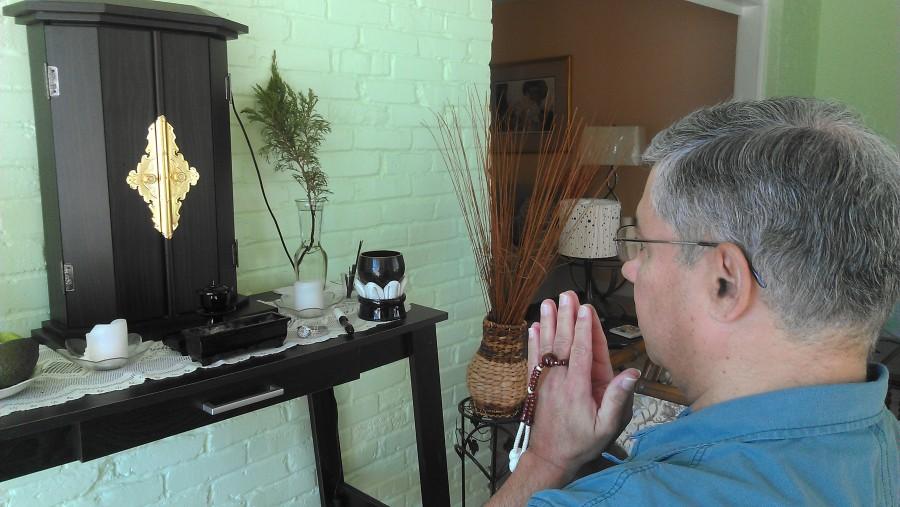




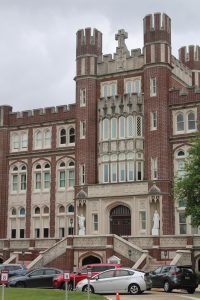


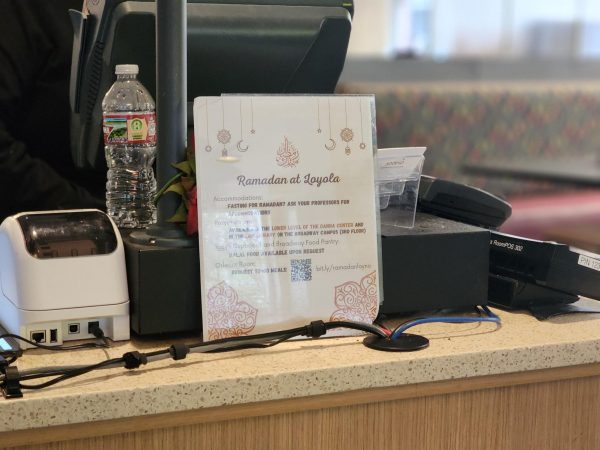
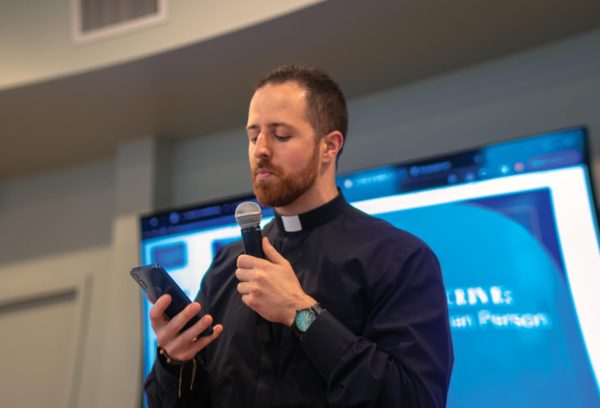
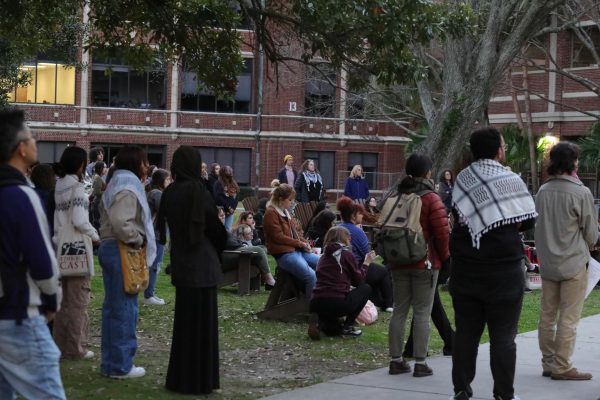
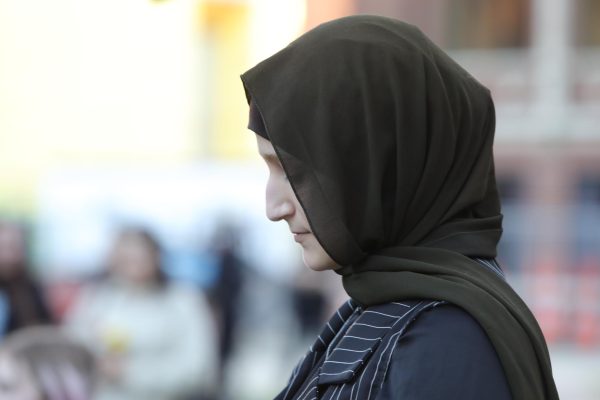


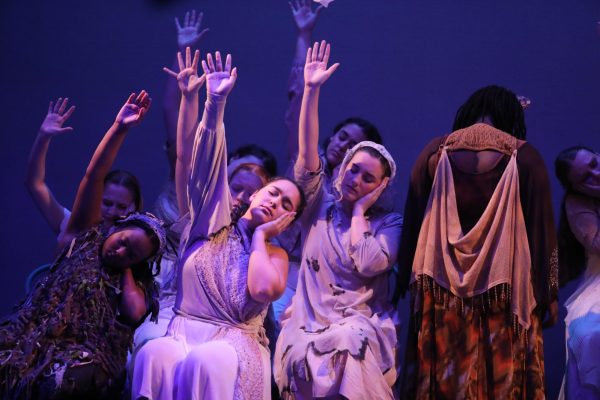

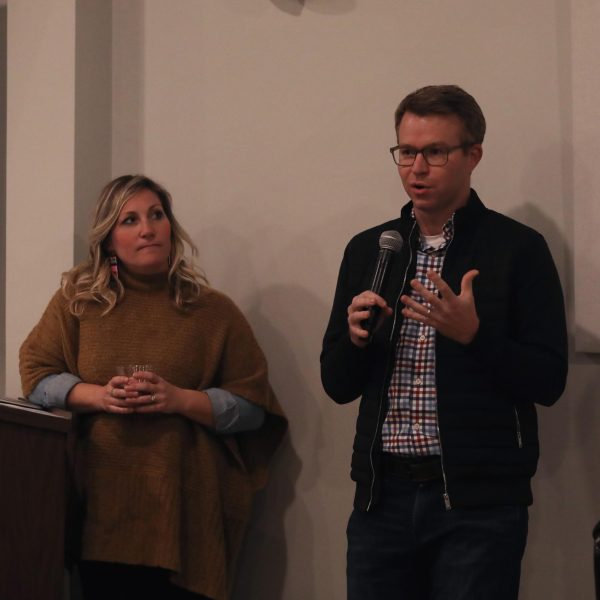
Cathleen • Oct 12, 2018 at 2:59 am
I’ve practiced 38 years strictly with NST temple. Trust Scotty on this. I practiced in NOLA. IN, NY, Fiji, Guam and Hawaii. My 1st meeting was in ny in the early 1970’s. After I moved to NOLA I found it again and joined.
Cathleen Pomponio • Jan 4, 2024 at 10:08 pm
I found that Marji shared a letter I sent to her to please take care of our “rotund” friend: I meant Mr Robertson. He had a marvelous self depreciating sence of humor about himself. And Rotund means “Sonorous”. I called him from NY about 1996 and he had quit. I also saw Takako in NY and tried to get her to Temple but she was stubborn about things. Anyway take care and hopefully Tozan again. I upgraded my Altar situation.
Pamela Morris • Apr 13, 2018 at 4:40 pm
I was a member for many years.I learned the hard way that I was completely brainwashed by this cult.Mr Ikeda and his top leaders are very very corrupt and manipulative.The advise I got from leaders caused tremendous damage to my life.I want to warn people not to get involved with the sgi. It is a trap.It is not true Buddhism like they say.They completely twist everything around.I have known many people who were once very sincere honest people and turned into arrogant hypocrital narsisist.Please take my warning.
Alison Kemp • Mar 22, 2017 at 6:08 pm
The only way to practice Nichiren Shoshu Buddhism correctly is through the priesthood and contacting Hokkeko groups and stay far away from SGI (no longer true buddhists)
The SGI leaders are aggressive thugs who pump their brainwashed members for their hard-earned money. If you are an SGI member you are constantly being watched by SGI leaders. Daisaku Ikeda is a political and business tycoon in Japan and has many rape allegations tied to his name. They nearly tore my family apart when I was little and I am so glad to be rid of those monsters.
I only follow the priesthood and I practice with Hokkeko members! 🙂
Debbie • Sep 7, 2018 at 5:59 am
This is so true.
Cathleen • Mar 10, 2024 at 10:38 pm
For those that need to buy new Altars in far off places: a good furniture store carries credenza. If you buy the right height with a good cabinet it will be OK. Until you have a chance to find a Butsudan.
Kurt Triffet • Feb 2, 2017 at 7:09 pm
Great article. For those who don’t know, the SGI was once one of the the lay organizations for Nichiren Shoshu, the religion. More 20 years ago, their president, Mr Ikeda, decided he no longer wanted to follow the religion’s doctrine, and the SGI left to form its own sect. The split affected a lot of US members, who were very upset by what had happened. Still a lot of sour grapes as you all can see. The SGI had previously been given jurisdiction for all of the US, so it’s true that most discovered Nichiren Shoshu Buddhism through the SGI. Today, the two are quite different, with Nichiren Shoshu exactly as it has always been, and the SGI more of a new-age version.
Despite all that Nichiren Shoshu continues to a vibrant and “adult” way to practice Buddhism.
Marcel S • Dec 21, 2016 at 4:20 pm
All Nichiren Buddhists should read “The Background,Meaning,Content and Spirit” by
Reverend Kando Tono.
Prosper Yaw Nkrumah • Aug 21, 2016 at 2:35 pm
SGI followers, what’s your heritage? Come on, be real After Daisaku Ikeda what next? True Buddhism is Nichiren Shoshu, not personality cult. Stop the slander. Mr Harthorn, cudoos.
[email protected] • Jun 1, 2016 at 3:57 pm
The SGI is just wonderful. Thanks to Daisaku Ikeda we have this wonderful practice in the West.
Jeff Flynn • Mar 17, 2016 at 1:38 am
BTW think back to who introduced you to this practice. If you have any gratitude at all, you will recall that it was an SGI member. The reason you have a gohonzon today with all of its benefits is the SGI, not the priesthood.
Jeff Flynn • Mar 17, 2016 at 12:19 am
Nichiren said all human beings are equal and equally possess the Buddha nature. The priests say that lay people can only obtain Buddhahood by following them and “supporting” them (paying them). . This is the opposite of what Nichiren said. The high priest is a fake. I am sorry that Mr. Hanthorn has such pure faith and good intentions and is following these losers. Mr. Hanthorn, you don’t need the priesthood to attain enlightenment. My gohonzon works just fine! The priesthood is the embodiment of the second of the 3 powerful enemies described by Nichiren. Remember the 3 powerful enemies? False priests? Well, that’s what Nichiren Shoshu is. Remember the vow to achieve kosen rufu? Who is fulfilling this vow today? Not the priests. Good luck Mr. Hanthorn I know you will figure this out….
ALLIE M. • Jul 18, 2018 at 10:43 pm
Tx, Jeff for writing the real truth. I’ve had my Gohonzon for 44-1/2 yrs. Have achieved the most impossible goals thru overcoming impossible odds. Obviously, I must be doing something right!
Jamal Melancon • Feb 3, 2016 at 7:33 am
I appreciate your comments! Scott Hanthorn can also be contacted for more information about his practice of Nichiren Shoshu at 504-915-195.
Isaac Appiah • Feb 2, 2016 at 11:45 pm
Very interesting Buddhist practise. The attainment of actual proof from this Buddhist practise are the values that makes the Daishonin Buddhism the religion for life.
Joe • Feb 2, 2016 at 1:37 pm
Anyone interested in further information on Nichiren Buddhism should contact the local SGI community center in New Orleans.
Mistymyo • Feb 3, 2016 at 6:04 am
You have been misled by the SGI leaders. This is exactly the opposite of what Hanthorn practices and why he includes this warning:
“Because this is such a powerful energy, it is important to avoid counterfeit Gohonzons that might distort your life force,” Hanthorn said. “NST.org is the only true source of Nichiren Shoshu Buddhism.”
SGI distorts the true meaning Nichiren Shoshu Buddhism and makes counterfeit Gohonzons. The High Priest of Nichiren Shoshu transcribes the Gohonzons that are given to members of NST. Contact NST.org to learn the truth.
M.S. Wesley • Apr 30, 2017 at 2:21 pm
SGI -USA , 1331 Prytania Monday nights have great meeting for all to attend, 7:00 pm
Guido Konijn • Feb 2, 2016 at 1:32 pm
Great piece, Thank you. Hard to find comprehensive writing about this beautifull practice!
Carlos Lagos • Jan 30, 2016 at 9:31 pm
This is amazing!!! Very interesting as well